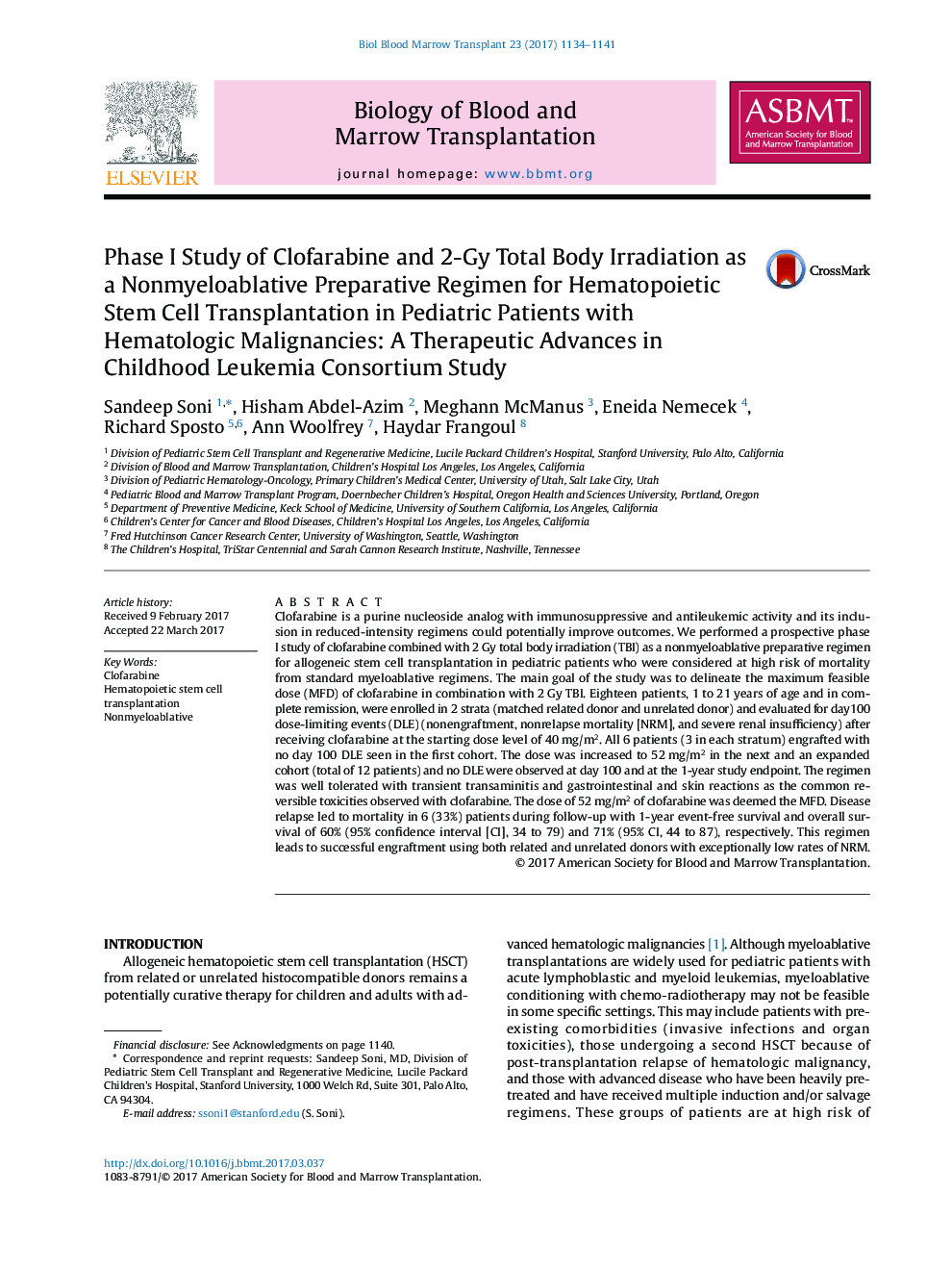| کد مقاله | کد نشریه | سال انتشار | مقاله انگلیسی | نسخه تمام متن |
|---|---|---|---|---|
| 5524350 | 1546239 | 2017 | 8 صفحه PDF | دانلود رایگان |

- The maximum feasible dose of clofarabine with 2 GY total body irradiation as a nonmyeloablative preparative regimen was assessed
- The maximum feasible dose of clofarabine in conjunction with 2âGy total body irradiation was deemed to be 52âmg/m2
- This regimen was associated with high donor engraftment and low transplantation-related mortality and toxicity
- This is an effective regimen for patients who cannot undergo standard myeloablative stem cell transplantation.
Clofarabine is a purine nucleoside analog with immunosuppressive and antileukemic activity and its inclusion in reduced-intensity regimens could potentially improve outcomes. We performed a prospective phase I study of clofarabine combined with 2âGy total body irradiation (TBI) as a nonmyeloablative preparative regimen for allogeneic stem cell transplantation in pediatric patients who were considered at high risk of mortality from standard myeloablative regimens. The main goal of the study was to delineate the maximum feasible dose (MFD) of clofarabine in combination with 2âGy TBI. Eighteen patients, 1 to 21 years of age and in complete remission, were enrolled in 2 strata (matched related donor and unrelated donor) and evaluated for day100 dose-limiting events (DLE) (nonengraftment, nonrelapse mortality [NRM], and severe renal insufficiency) after receiving clofarabine at the starting dose level of 40âmg/m2. All 6 patients (3 in each stratum) engrafted with no day 100 DLE seen in the first cohort. The dose was increased to 52âmg/m2 in the next and an expanded cohort (total of 12 patients) and no DLE were observed at day 100 and at the 1-year study endpoint. The regimen was well tolerated with transient transaminitis and gastrointestinal and skin reactions as the common reversible toxicities observed with clofarabine. The dose of 52âmg/m2 of clofarabine was deemed the MFD. Disease relapse led to mortality in 6 (33%) patients during follow-up with 1-year event-free survival and overall survival of 60% (95% confidence interval [CI], 34 to 79) and 71% (95% CI, 44 to 87), respectively. This regimen leads to successful engraftment using both related and unrelated donors with exceptionally low rates of NRM.
Journal: Biology of Blood and Marrow Transplantation - Volume 23, Issue 7, July 2017, Pages 1134-1141